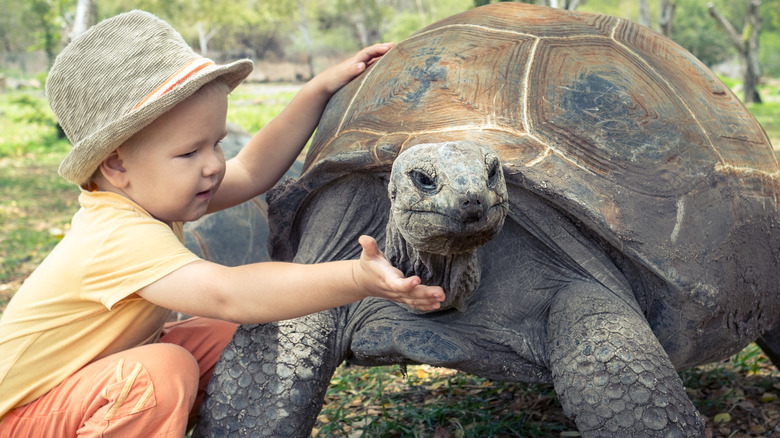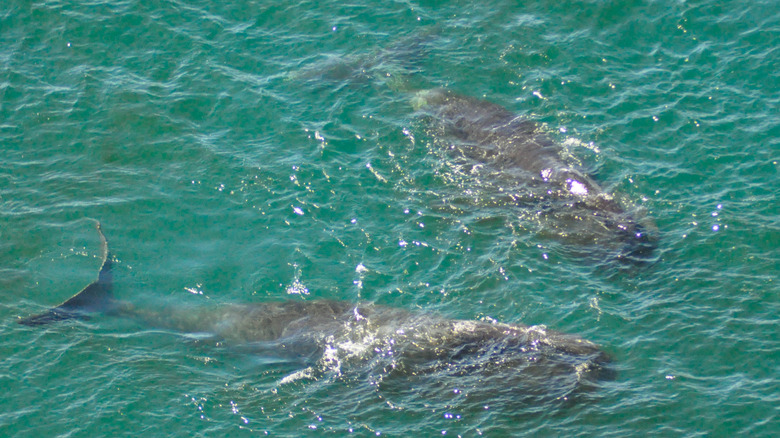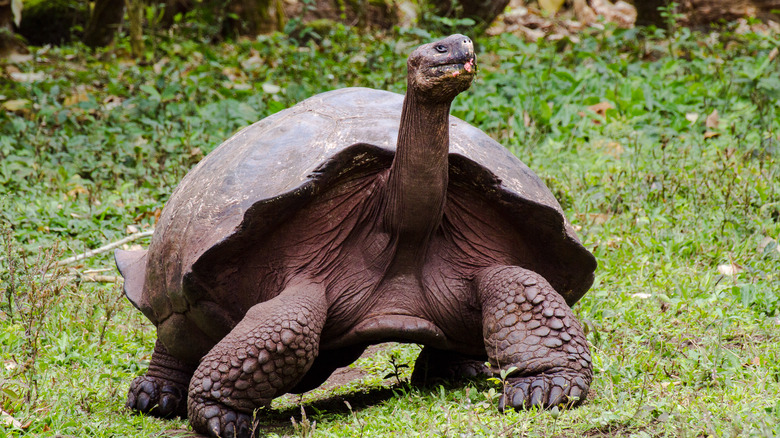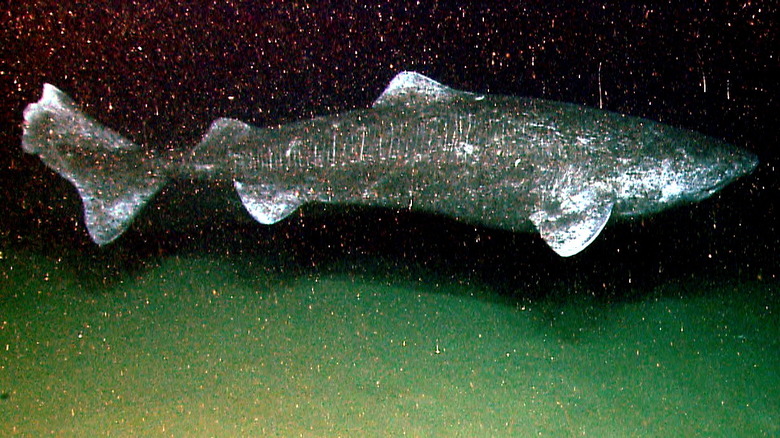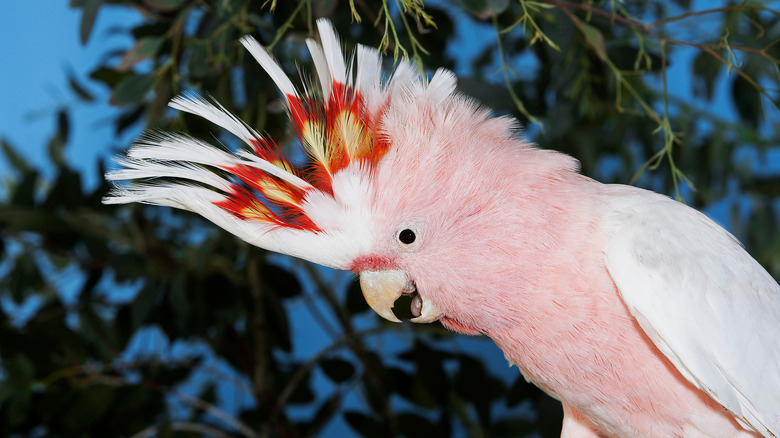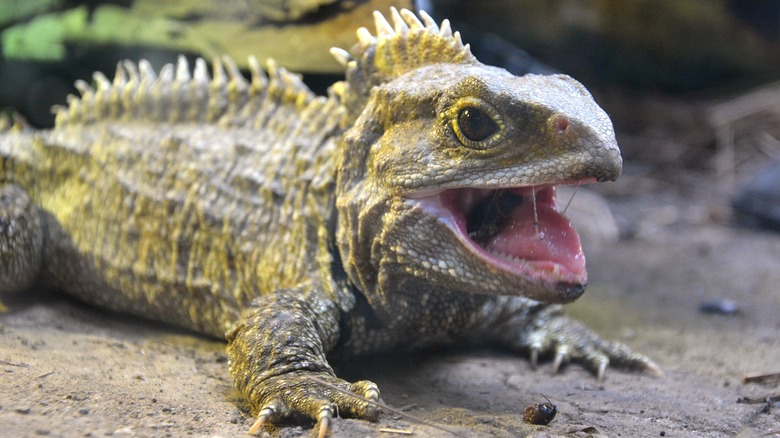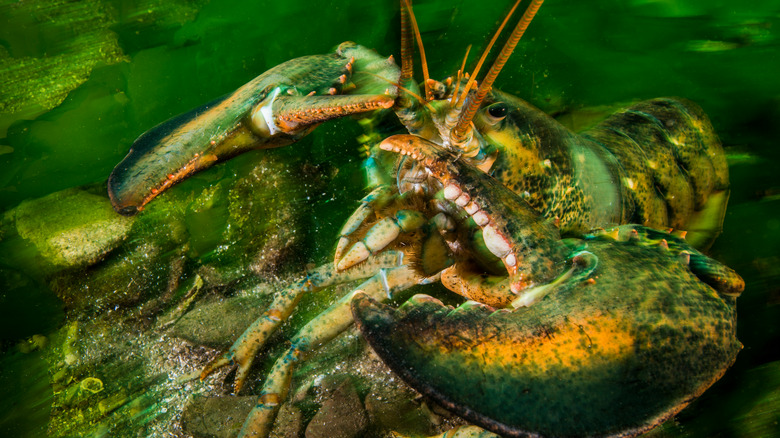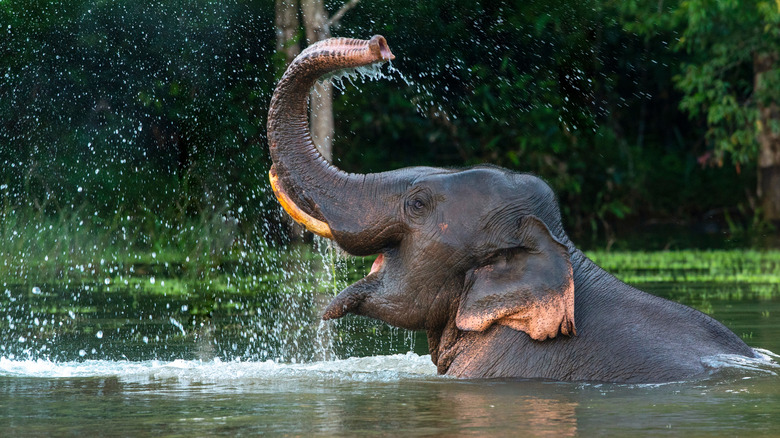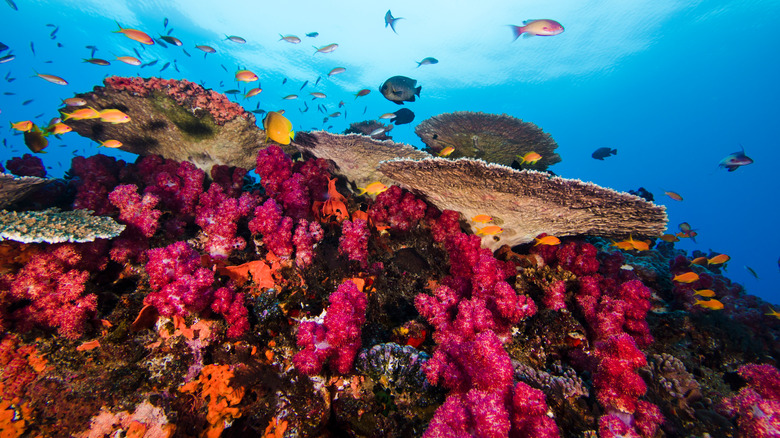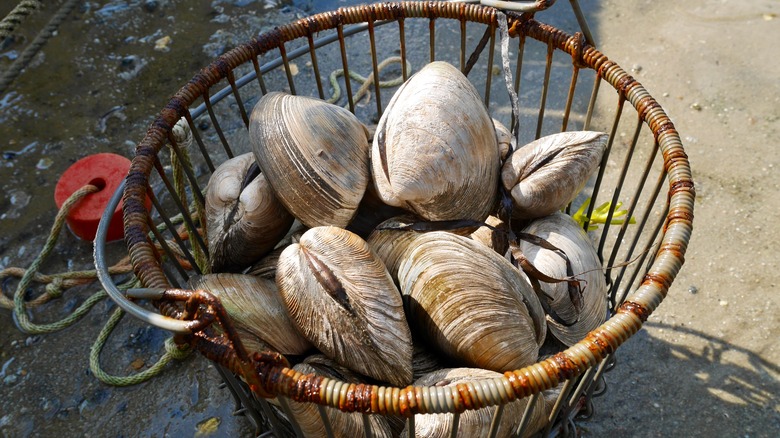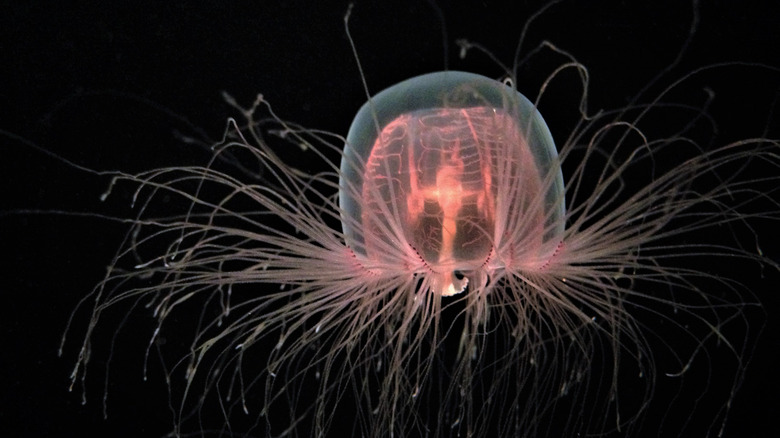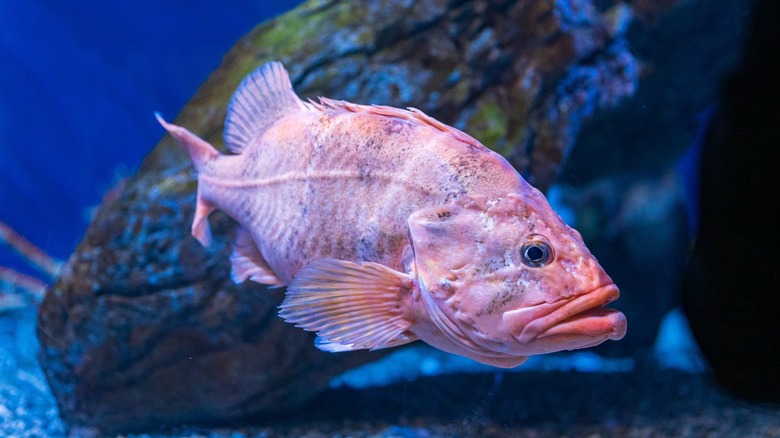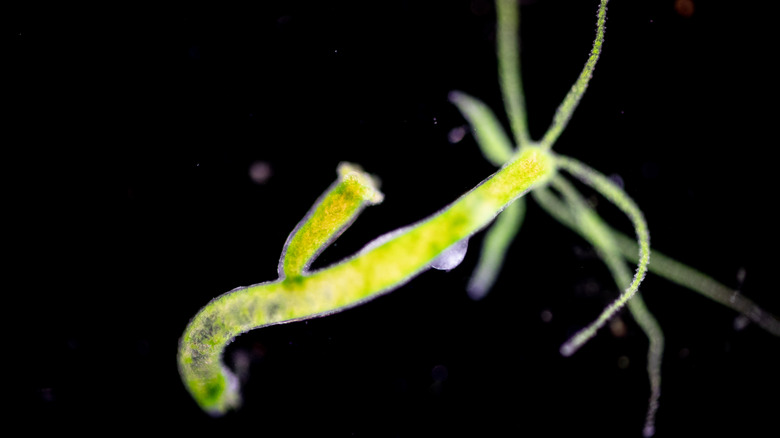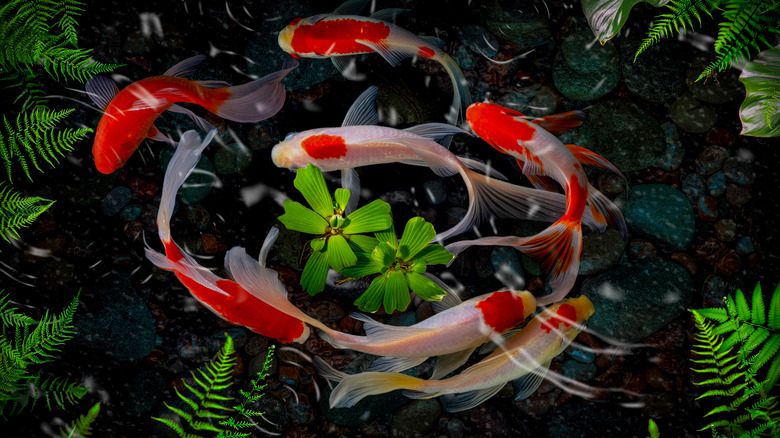Animals That Live Longer Than Humans
The latest data from the CDC shows that the average lifespan for Americans in 2020 was 77. This was actually a decrease due to the COVID-19 pandemic and other factors. However, despite the downturn, the average human lifespan was only 40ish about two centuries ago. Improvements in hygiene, sanitation, and medicine have all contributed to our increased longevity.
Some humans live longer than others; allegedly, the oldest living human in history was the French woman, Jeanne Louise Calment who according to the Guinness World Records, died at age 122 in 1997. If Calment's feat of longevity seems astonishing, consider a 2021 study published by Nature that suggests that humans could potentially live as long as 150 years.
Most of us will not get anywhere near Calment's age and can expect to live the average. But compared to most other creatures 77 is a long time. The American Kennel Club states that you can expect your dog to live maybe up to 13 years and UC Davis gives cats up to 15 years. But there are some animals out there that live longer than we humans. Let's take a look at a selection of these creatures that, in terms of longevity, can put us humans into our graves.
Bowhead Whales
In arctic and subarctic waters lives the animal with the longest mammalian lifespan known to science. Bowhead whales, according to NOAA, can reach up to 72 feet long and weigh in at 100 tons. But despite their size, like almost all baleen whales, they are gentle.
Bowheads, because they are slow swimmers and have a tendency to float after they are killed, were a prime target for whalers starting in the 1800s. From a pre-whaling population of over 50,000, they were driven to near extinction levels with just 3,000 individuals still surviving by the 1920s. Since the end of whaling, their numbers have recovered to an upper end of almost 20,000, although the genetically distinct population of the Okhotsk Sea has only a few hundred.
These whales live a long time. They easily cap a century of life, which has been seen by studying harpoon tips found in living specimens. More advanced methods of age testing, such as analyzing baleen and eye lens, show that bowhead whales can live for over two centuries. One specimen the Canadian Journal of Zoology reported on was 211 years old. It is believed that these whales have a gene that repairs damaged DNA – this is most likely the key to their geriatric success.
Giant Tortoises
When you see a giant tortoise, you will understand why they are called that. Located in islands throughout the world, these reptiles evolved into large sizes due to their isolation. The largest group of giant tortoises, the Galápagos giant tortoise, is comprised of 13 species, per National Geographic. They regularly grow to over 5 feet in length and in excess of 500 pounds. These tortoises were so common that their island home was named after them by Spanish explorers, Galápagos means tortoise in Spanish.
Almost all these docile animals are long-lived. The Galápagos giant tortoise regularly lives for over a century with one specimen verified to have lived to 175. However, in terms of age records, the Seychelles have the Galápagos beat. Jonathan, a giant tortoise from the Seychelles that was moved to St. Helena in 1882 is believed to have been born in 1832. This is because he was fully mature when he was moved which would have made him 50. Guinness World Records reports that in 2022, Jonathan celebrated his 190th birthday making him not only the oldest chelonian (turtles, tortoises, and terrapins) ever but also the oldest land animal. It is possible that Jonathan is much older. In fact, there are unconfirmed cases of giant tortoises being over 250 years old.
Greenland Shark
Slowly swimming at the bottom of the Arctic Ocean is a predator who could have been lurking around since before George Washington was president. The Greenland Shark, as described by Science, can live at least 272 years. If correct, this makes them the most geriatric vertebrate in the animal kingdom.
Greenland sharks are pretty different from your garden variety Great White. Data provided by LiveScience informs us that they reach up to 24 feet long and can weigh up to 2,645 pounds. They also are slow swimmers (less than 2 mph) and have poor eyesight, mainly due to a parasite that attached itself to its eye lens. It is thought that the cold environment of the arctic leads to a slower metabolism and a longer lifespan.
But wait! These are sharks. They are predators. How can you hunt with poor eyesight and slow speed? The answer is that Greenland sharks tend to be scavengers, eating corpses of animals that come their way, like polar bears and seals. Greenland sharks also make for some dubious eating. Wired reports that they are used in Iceland to produce hákarl, dubbed the "world's foulest food." Atlas Obscura says that it smells like urine and maybe tastes like blue cheese. The flesh of the shark is extremely poisonous because it accumulates tons of ammonia. So to rid the flesh of the poison the meat is allowed to rot and ferment in dirt or in the air for months.
Parrots
One of the most flamboyant and intelligent types of birds is the parrot. Parrots, are in fact, well-known to be long-lived as pets and are no doubt a concern of estate planners. Macaws, for example, have a life expectancy of up to 60 years in the wild and, according to National Geographic, there are undocumented assertions that they can live a century.
However, the oldest verified parrot was a cockatoo. Cockatoos are a type of parrot commonly held as pets and form a variety of species. Cockatoos are also known for their intelligence. National Geographic reported that sulfur-crested cockatoos have learned how to open garbage bins by copying others, strong evidence of social learning and culture.
Cockatoos can be very long-lived. As described by Guinness World Records, a Cacatua leadbeateri, that is a Major Mitchell's Cockatoo, named Cookie was kept at the Brookfield Zoo in Chicago from May 1934 until dying in 2016. Since Cookie was about a year old when the zoo obtained him, he was designated a hatch date of June 30, 1933. This would make Cookie at least 83 years old, just inching past the average American lifespan.
Tuataras
Tuataras at first, second, and third glance appear like lizards. But they aren't. According to New Zealand's Department of Conservation, tuataras are an order of reptiles that is as distinct from a lizard as that of a snake from a turtle. The order Sphenodontia, which roamed the planet during the age of the dinosaurs, once was as diverse as 60 distinct species but today the sole representative is on New Zealand.
At about 3.3 pounds when grown, tuataras are not exactly komodo dragons, but they are the island nation's biggest reptiles. They are also one of the most endangered. Once they lived all through New Zealand, but poaching, introduced animals such as Polynesian rats, habitat destruction, and low diversity have driven these animals to live on only a few dozen of the smaller islands. According to the AAAS, the population is stable with perhaps as many as 100,000 living in the wild. But their limited range makes them very vulnerable.
Tuataras mate infrequently, about once every four years, which is the smallest mating interval for any reptile. But they do have longevity. These reptiles can produce offspring well into their sixth decade and easily live to over a century. One specimen successfully produced offspring at 111 years old. It is suspected that some individuals can live for 200 years.
American Lobster
The American lobster (Homarus americanus) ranges in the Atlantic from Maine to North Carolina. As described by NOAA, and as known by most diners, these crustaceans are heavily desired for food. Thus, they are well-regulated to try to prevent overfishing. Lobsters grow through molting. That is, they regularly shed their exoskeletons in order to allow new growth. This happens frequently in the early years of a lobster's life, occurring 25 times before the age of eight, to allow it to grow quickly. In this way, lobsters have been known to reach a hefty 44 pounds.
Lobsters are also well-known for their longevity. Live Science states that these animals can live up to a hundred years. This may be due in part to their cold environment, which slows metabolism. In comparison, the Caribbean spiny lobster doesn't make it to two decades. Science Advances published research that contends that the American lobster's longevity is due to a "deep integration between the neural and immune systems."
Asian Elephants
Elephants are the world's largest land animals alive today. There are two species of elephants, the larger African and the smaller Asian, which in some cases has been semi-domesticated. Typically, an African elephant will live to about 70 years in the wild (per National Geographic) while their Asian cousins will live to about 60. Curiously, the American Wildlife Federation reported that, unlike other animals, elephants tend to live longer in the wild than in captivity.
So while the average lifespan of an elephant is shorter than that of a human, there are exceptions. This is particularly the case with Asian elephants, though it may be that since Asian elephants are often in closer contact with humans we just know more about them. According to the BBC, one Asian elephant named Dakshayani died in India at age 88 in 2019. In another instance, an Asian elephant named Lin Wang died in a Taiwanese zoo at age 86 in 2003. Lin Wang was not just remarkable for his longevity: During World War II, the elephant had also served as a work animal for the Japanese before being captured by the Chinese and serving the Allied cause.
Corals and Sponges
What if you could live for 11,000 years? Sounds like a pretty good deal? But what if you couldn't move for all that time. That is the tradeoff for sessile (immobile) animals such as corals, sponges, and macroalgae. National Geographic tells us that Red Coral can easily live five centuries while Monorhaphis chuni, a deep sea sponge, can live for 11,000 years.
How do these organisms work? As NOAA describes, coral polyps floating through the water hitch onto a rock or some other underwater structure. Individual polyps can clone themselves asexually, meaning that they can replace their parts indefinitely. Another factor that leads to longevity among these organisms is the environmental stability provided by deep water. Issues such as temperature changes and storms are not as acute at 1,000 feet as they are at 10 feet. In these environments, stability encourages longevity since there is less predation. For example, there is no benefit to an organism spending the energy to replace an arm if the energy is better spent to prepare itself against a changing environment or predation.
Ocean Quahog
The ocean quahog is a common clam. NOAA explains that these mollusks can be found in the Atlantic as far south as North Carolina and are regularly harvested commercially and recreationally. Quahogs begin life as larvae, formed from eggs that have been fertilized by sperm that jettisoned into the water. After about a month, they settle on the ocean floor where they develop. A quahog fully matures at about 20 years old. Like most clams, they are filter feeders, buried in the bottom of the seafloor where they suck in water and extract nutritious algae. Cod, sea stars, sculpins, rock crabs, and other sea creatures all prey on quahogs, but once they reach a large enough size, they generally escape being eaten by natural predators since their protective shells are quite strong. This simple life leads to longevity. The Christian Science Monitor reported that in 2006, scientists studying climate change pulled up a quahog from deep waters off Iceland. By analyzing lines on the shell, they concluded that the clam was an amazing 402 years old.
But the scientists were wrong. Further research pegged the clam as coming into the world in 1499, making it half a millennium old, plus. The clam was named Ming, since it had been born during the time of the Ming dynasty. Ming was given the title of oldest non-colonial animal in the world (creatures like corals are based on polyps that clone themselves).
Think about that the next time you order clam chowder.
The Immortal Jellyfish
One remarkable animal is Turritopsis dohrnii, or the immortal jellyfish. The American Museum of Natural History tells us that this invertebrate starts off life as a larva that latches onto a surface. It then develops into a colony of polyps that transforms into a free-swimming jellyfish (called a medusa) that we all know and avoid when swimming in the ocean. It is unlikely, however, that you would see this jelly since it is only a mere 0.18 inches wide.
But what makes this sea animal so remarkable is its regressive ability. When harmed or even when lacking food, the immortal jellyfish does something radical. According to the Natural History Museum, it folds in on itself and loses the ability to swim. It settles on the seafloor. Within 36 hours, it transforms back into a polyp. Then it repeats the cycle where a new medusa is created. The technical term for this is "transdifferentiation," which means that a specialized cell can transform into an entirely different specialized cell. One analogy that the Natural History Museum provides is to think of it like a caterpillar turning into a butterfly and the butterfly turning back into a caterpillar indefinitely. Since the new animal is a genetic clone of the old animal, it is in essence a form of immortality, hence the name. Of course, immortality isn't completely correct. The species often falls prey to predators such as fish and turtles. Polyps too are eaten by sea slugs and crustaceans.
Rougheye Rockfish
The rougheye rockfish (Sebastes aleutianus) is one of the longest living fish known to science. According to the Committee on the Status of Endangered Wildlife in Canada, this species ranges through the northern Pacific from north of Japan to southern California. The fish earned its common name from the spiky projections about its eye area. The fish is typically found between 525 to 2,165 feet where it survives by eating shrimp. What is truly remarkable about the rougheye rockfish is its age. One specimen caught off Alaska was analyzed and found to be 205 years old. It is likely that since this is just a single specimen, there are, in fact, older individuals down on the seafloor.
The secret of their longevity is discussed by Scientific American. There seem to be multiple factors, such as size, the cold environment, and most importantly genetics. This species, along with other species of rockfish have genes that can repair damaged DNA. This is being studied by researchers in the hopes of better understanding aging in humans and how cancers may be fought. In the meantime, there is a call to protect these long-lived fish from overfishing and other pressures which threaten their existence. Even though these rockfish are long-lived, they are not genetically diverse, which means that sudden changes in the environment could be disastrous for them.
Hydras
The Hydra magnipapillata, at only 0.4 inches in length, is hardly noticeable. But this species may be immortal. According to Live Science, these freshwater polyps have regenerative capabilities. Each hydra's body is mainly composed of stem cells. This allows the animal to turn that cell into replacement cells of a certain function depending on what is needed. It is in this way, that it is constantly being renewed. Researchers who studied hydras found that while they expected fertility and other signs of age to occur in the species, they found none.
While hydras can theoretically be immortal, in reality, they never are since they are subject to predation, water pollution, and disease. However, if one lived in a lab, a hydra could keep on going as long as it's regularly given meals of brine shrimp. Daniel Martinez, the Pomona College biologist who conducted the research stated, "I'm hoping this work helps sparks another scientist to take a deeper look at immortality, perhaps in some other organism that helps bring more light to the mysteries of aging."
Japanese Koi
A ubiquitous feature of water ponds is the decorative fish called koi. Japanese koi (Cyprinus carpio) are, according to the Smithsonian's National Zoo and Conservation Biology Institute, a species of carp. While carp had been domesticated by the Chinese at least by the 4th century CE, koi are carp unique to Japan. In the early 19th century, rice farmers bred colorful carp resulting in koi, which, like other domesticated animals, have been bred into diverse colors and types. As "Fabulous Fish" tells us, the most popular varieties of this fish are Kohaku (white with red patterns), sanke (white with black patterns), and showa (black with white and red patterns). These fish can grow quite large, up to 3 feet long, and weigh 25 pounds.
Koi might also be geriatric champions. While most have a lifespan of 40 years (not bad for a fish), Nature World News reported that one specimen named Hanako that died in 1977 was analyzed and found to be almost 230 years old, based on an examination of rings on its scales. However, it should be noted that these claims are challenged, with Snopes pointing out that the method of aging the fish was dubious. Even National Geographic says Hanako's age may be a legend. So while the jury is still out on the lifespan of a koi, it is cool to think that your great-great-grandchildren may inherit one from your water garden.
